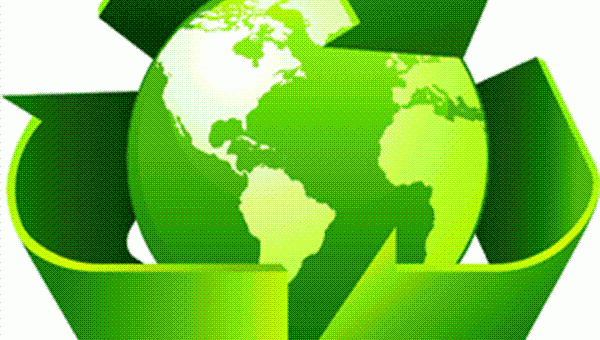
Green is big business and it’s even bigger PR. Large corporations can’t afford the bad press of looking like they’re bad for the environment. Whether they claim to love the environment, the people or animals, businesses these days need to show they care about more than just their bottom line profit. So are these big brands really as good as they claim?
MacDonald’s
Love it or hate it MacDonalds have one of the biggest brands in the world and they’ve had their fair share of negative publicity. From studies into the quality of their food with documentaries like Super Size Me to the running jokes about their staff, everyone is a critic.
In 2009 Macdonalds decided to do something about the negative connotations attached to their brand and changed their logo across Europe from red to green. After all everyone loves the colour green right? Green means healthy and environmentally friendly but did they actually change anything other than the colour? Well Macdonalds have started to pull away with the colour red and it’s synergy with greed and danger. Their ad campaigns are often based around the natural ingredients they chose for their food, they’ve stopped selling the super-size meals, their coffee is fair trade and comes from sustainable sources and they have a variety of salads and ‘healthy’ alternatives on their menus now.
They have a whole page on their (UK) website dedicated to their cause for a sustainable future. Their cooking oil is recycled into bio diesel to fuel their vehicles and they say their grills are fitted with alarms to remind staff to switch them to standby mode if they’re inactive for too long.
Whether you believe this is all just clever PR or not, they’re certainly trying to tie their name with energy conservation and with a name as big as their attached to the cause, surely it’s just as good publicity for eco businesses as eco business is for them?
Starbucks
Just like MacDonald’s, Starbucks are an American based consumer giant with distinctive green logo and a lot of PR around their attitude to being environmentally friendly. Starbucks has never come under much fire for damaging the environment (apart from some negative publicity surrounding wasting too much waster which turned out to be a public health code requirement and even then they found a way around it). It’s been dogged by rumours over the past few decades about putting small coffee shops out of business, exploiting coffee farmers in third world countries.
The reality is that it’s generally the corporate identity people appear to object to the most. It’s perceived as being a multinational corporation trying to come off as friendly local eco-friendly coffee chain but are they really evil?
A while ago Starbucks got some rather negative publicity around their preferred method for colouring their smoothies and other pink beverages. Turns out they were using crushed bugs, well extracts of cochineal to be exact and it didn’t go down very well with vegetarians and people in general. Starbucks are now adamant they’re using a food colouring taken from the tomato to colour their pinker drinks but it wasn’t a great bit of PR for such an eco-friendly firm.
Away from buggy blunders they actually do try to give as much back to our planet as possible. From cutting back on the water used to wash spoons and utensils to the progressive eco-friendly architecture they’re using in their shop buildings. When it comes to looking after our planet it’s their fair trade coffee beans that speak the loudest. For starters all their farmers get paid above minimum wage, they’ve opened support centres in Costa Rica, Rwanda, Tanzania and South America to help their coffee farmers and they’re increasing the volume of fair trade coffee purchased every year. In 2011 they reportedly brought 86% of their coffee from ethical fair trade sources.
The Body Shop
After an inspiring trip to the States back in the 70’s, Anita Roddick came across a shop selling soaps and lotions all made from natural ingredients. Roddick decided this was something amazing and brought the idea of The Body Shop back to the UK and in her home town of Brighton it flourished. None of The Body Shops products were tested on animals (and this was a long time before this stance became so popular) and it became an advocate of fair trade products (again, before it became a trendy badge for businesses to wear). She teamed up with Green Peace and openly supported many charities and good causes. Before she died, Roddick pledged to donate all her fortune to charity (which she did). Roddick demonstrated over and over again that financial rewards were not her primary motivation.
Despite all this good work The Body Shop was slammed in Jon Entine’s 1994 article ‘Shattered Image: Is The Body Shop Too Good To Be True?” It was reported that Roddick stole the idea of The Body Shop after her trip to America in the 70’s. He also claimed many of the ‘all natural’ products sold actually continued lots of artificial ingredients and despite their pro charity attitude it took 12 years of trading and profits before a single penny was donated anywhere. In 2006 The Body Shop was sold to French company L’Oreal who notoriously test on animals and are part owned by Nestle who don’t have the best reputation for ethical and green business practices.
In any other circumstance a business like The Body Shop would be hailed as a shining example of ethical trading but it’s because they traded on it they came under so much criticism. Roddick was appointed as a Dame by Queen Elizabeth II and has been praised time and time again for her humanitarian work. It’s not only animal testing and fair trade she promoted. She worked tirelessly campaigning for women’s self-image and today The Body Shop is still one of the most ethical shops on the high street.
BusinessEnergy.com are a business electricity comparison site who offer businesses the chance to make sure they’re getting the best deal possible to reduce their energy bills and their carbon foot print.










Comments